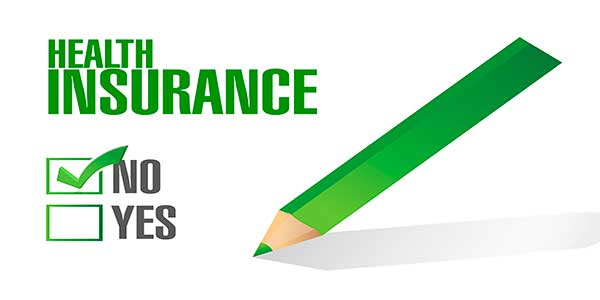Coverage Exemptions
Exemptions from the fee for not having health insurance.

The fee for not having health insurance (sometimes called the "Shared Responsibility Payment" or "mandate”) ended in 2018.
This means you no longer pay a tax penalty for not having health coverage. If you don’t have health coverage, you don’t need an exemption to avoid paying a tax penalty.
► However, if you’re 30 or older and want a "Catastrophic" health plan, you must apply for a hardship exemption or an affordability exemption to qualify.
States can have their own mandate
Several states have adopted their own mandates with some assessing tax penalties. These include:
- California
- District of Columbia
- Massachusetts
- New Jersey
- Rhode Island
- Vermont.
Vermont has a mandate but has not yet imposed a tax penalty for not having coverage. Other states are considering individual mandates.
Maryland asks on state tax returns about health insurance coverage but so far just to encourage individuals to enroll.
♦ The information presented below is historical. To help you understand exemptions for 2018 and previous years and how to avoid paying a penalty.
Health coverage-related exemptions
Gap exemption
Anyone with a gap in health coverage of no more than 2 consecutive months can claim this exemption.
If anyone else on your tax return qualifies, you can claim this exemption for them too when you file your taxes.
You’re considered covered any month you had qualifying health coverage for even 1 day.
Possible situations
♦ You didn’t have coverage from March 2 to June 15. Your coverage gap was 2 months – April and May. You qualify for the exemption.
If your gap was 3 months or more, you can’t claim this exemption for any of those months.
♦ You didn’t have coverage any day in April, May, or June. You can’t claim this exemption for any of those months.
If your coverage gap crosses calendar years, the months without coverage of the second tax year aren’t counted for the exemption for the first tax year. But the uncovered months from the first year are counted for the exemption for the second tax year.
♦ You didn’t have qualifying coverage November 2017, December 2017, and January 2018.
You’re eligible for the short gap exemption for 2017. But for the 2018 tax year, you’re not eligible for the short gap exemption for January 2018 because you didn’t have coverage for three consecutive months – from November 2017 through January 2018.
• If this were November 2018, December 2018 and January 2019 the gap would be two months. The requirement for having insurance ends January 2019.
♦ If you had 2 or more gaps in coverage during the year you can claim this exemption only for the months of your first coverage gap. This is true even if both gaps are less than 3 months.
Example: You didn’t have coverage any day in May or any day in November or December. You can claim this exemption only for May.
You can claim this exemption when you file your 2018 federal income taxes. Most people file their 2018 taxes in April 2019.
On Form 8965, enter code "B" in Part III, column (c), and identify the months to which the exemption applies. Most tax preparation software will walk you through the necessary forms.
Include Form 8965 when you file your tax return.
No gap exemption - How much will I owe?
The penalty for not having health coverage is calculated different ways. See some examples of how coverage gaps may be figured at the article Penalty.
Medicaid but not - exemption
You lived in a state that didn’t expand its Medicaid program and your household income was below 138% of the federal poverty level. You may qualify for this exemption and not have to pay a penalty for not having coverage.
You have to meet two criteria:
►You must have lived in a state that did not expand its Medicaid program under the Affordable Care Act.
►Your income and household size would have qualified you or your family for Medicaid if your state had expanded Medicaid coverage.
♦ You must have lived in one of these states at any time in 2018:
Alabama, Florida, Georgia, Idaho, Kansas, Maine, Mississippi, Missouri, Nebraska, North Carolina, Oklahoma, South Carolina, South Dakota, Tennessee, Texas, Utah, Virginia, Wisconsin, or Wyoming
♦ Your yearly income for 2018 was below 138% of the federal poverty level. In most U.S. states it is $16,643 for an individual, $22,411 for a couple, $28,180 for a family of 3 or $33,948 for a family of 4.
You will need to provide a copy of your Medicaid denial of eligibility notice. So you would need to go through the Medicaid application process.
You claim this exemption when you file your 2018 federal income taxes. Most people will file their 2018 taxes in April 2019.

